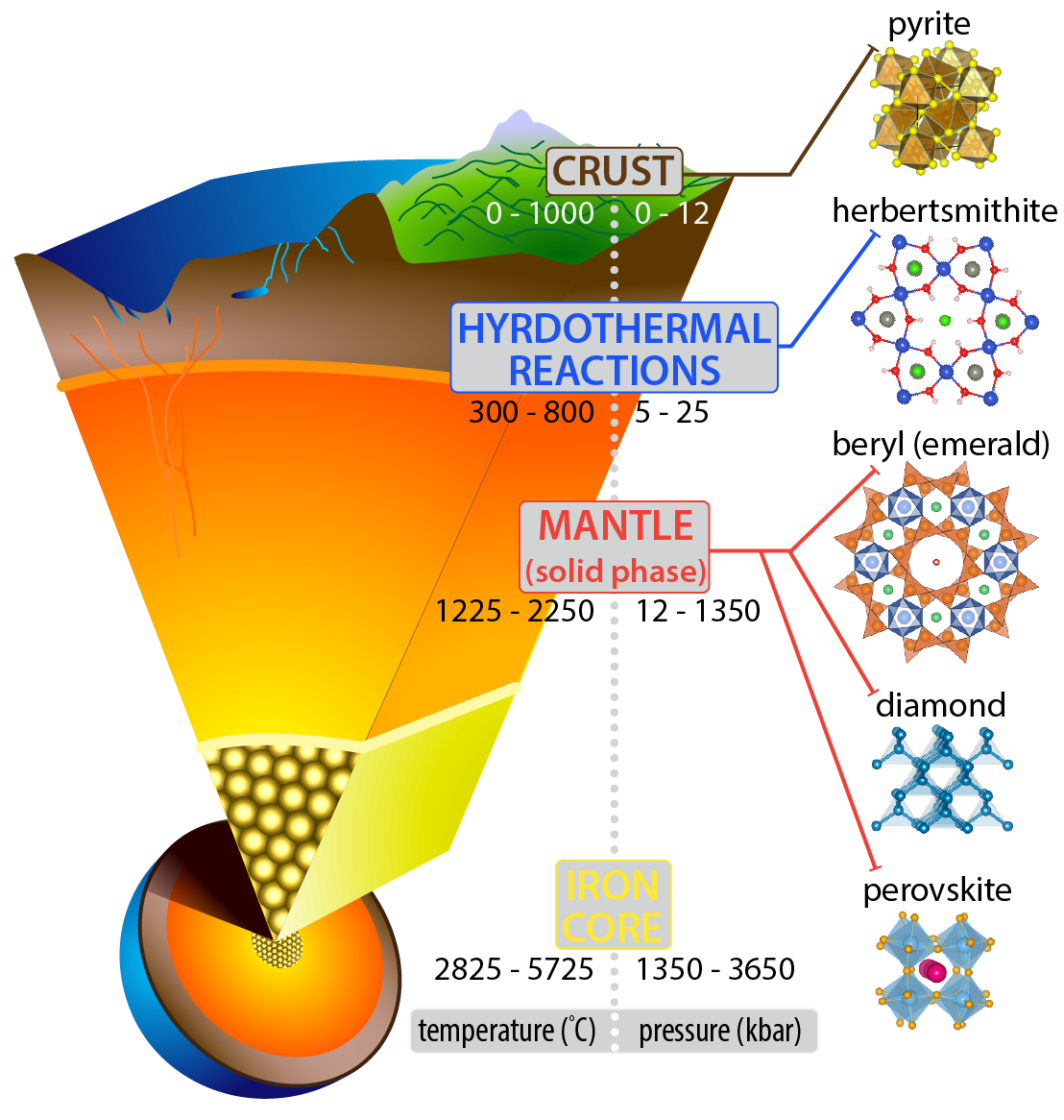
Schematic of the Earth as a synthetic vessel with minerals forming in different regions highlighted. Each mineral phase selected for this figure is also synthesized in laboratories for their unusual properties and applications under controlled environments that mimic geological conditions.
The Materials Genome Initiative (MGI) is a national program aimed at accelerating the discovery of advanced materials and reducing by half the time to integrate and deploy them into energy, medical, security, and communication technologies. Within this framework, the early stages of materials development rely on harnessing available computational science tools to (i) formulate materials structure–property–functionality databases from a plethora of diverse data, and (ii) establish protocols to search through that data to (iii) efficiently guide the selection of materials for synthesis and subsequent integration. The ultimate aim is to render serendipitous discoveries obsolete and, in turn, make rational or predictive materials discovery-by-design the gold standard, reducing both costs and time to discovery.
In the December 2013 issue of The Bulletin of the American Ceramic Society, assistant professor James Rondinelli and colleagues from across the United States articulate in their article, “Accelerating Functional Materials Discovery: Insights from Geological Sciences, Data-driven Approaches, and Computational Advances,” that advances in materials discovery will greatly benefit from unconventional multidisciplinary efforts (J.M. Rondinelli, N.A. Benedek, D.E. Freedman, A. Kavner, E.E. Rodriguez, E.S. Toberer, and L.W. Martin, "Accelerating Functional Materials Discovery: Insights from Geological Sciences, Data-driven Approaches, and Computational Advances," Am. Ceram. Soc. Bull., 93 14-22 (2013).) . Rondinelli and co-authors, joined by colleagues in the physical sciences, in particular petrologists, geochemists, mineral physicists, and information scientists were motivated to write this article after participating in an NSF-sponsored workshop in February 2012 on the MGI in Ceramics, Geosciences, and Solid-State Chemistry.
Rondinelli and co-authors challenge researchers to create new bridges between these often disconnected communities. The main message is that, by working together, earth scientists and traditional materials science communities will be able to accelerate materials discovery, design, and synthetic schemes by combining the vast databases of measured physical and chemical properties of both natural and engineered materials. At the same time, the authors encourage the formation of new blended educational platforms to train scientists and engineers who will discover and improve on the materials of tomorrow. This article highlights some illustrative examples where these disciplines could begin connecting, critical challenges, and future opportunities with the ultimate goal to reach out to the multiple communities exploring materials structure and property relationships for performance engineering.